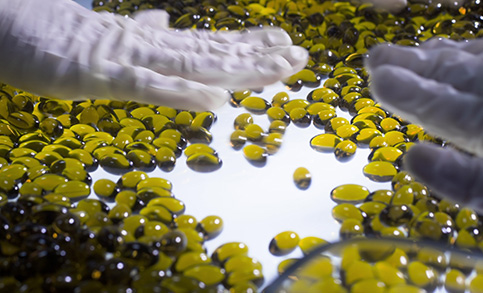Humidity control during gelatin drying is crucial to ensure the final product’s quality and consistency. Gelatin, or gelatine, is a translucent, colorless, brittle (when dry), flavorless food derived from collagen obtained from various animal body parts. Proper humidity control during this drying process prevents the gelatin from becoming overly brittle or losing its structural integrity, which is essential for its use as a gelling agent in food, pharmaceutical drugs, vitamin capsules, photography, and cosmetic manufacturing. Gelatin is used in shampoos, face masks, and other cosmetics; as a thickener for fruit gelatins and puddings (such as Jell-O); in candies, marshmallows, cakes, ice cream, and yogurts; on photographic film; and in vitamins as a coating and as capsules. Additionally, it is sometimes used to assist in “clearing” wines, where maintaining the right moisture levels during drying can impact its effectiveness in various applications.
Humidity control during gelatin drying is essential because gelatin is highly sensitive to both moisture and temperature. In the gelatin manufacturing process, particularly during the drying stage, if the air entering the dryer is not properly conditioned in terms of temperature and humidity, the gelatin can become brittle, or the gel may melt and fail to solidify into a band. Additionally, the presence of high relative humidity (RH) can lead to microbial contamination, which is highly undesirable given gelatin’s applications in the food and pharmaceutical industries.
Effects of Uncontrolled Humidity
- Melting of the gel and abnormality in solubility characteristics leading to the Gelatin becoming undesirable and not suitable for usage
- Microbial Contamination
- Biodegradability of Gelatin
Causes of Uncontrolled Humidity
Gelatin manufacturing is a complex process. Ossein, an insoluble collagen is the basic raw material for Gelatin processing. During the various phases of gelatin formation, moisture control is essential to have a quality finished product. During the drying process, Gelatin passes slowly over a distance of 35 metres through eight separate temperature zones and hence, humidity control is necessary.
General Recommendation
It is generally recommended that Gelatin be dried by circulating dehumidified air into the room maintained at 20% RH at 32°C.
Bry-Air Solution
Bry-Air dehumidifier is the most economical and reliable method of low temperature product drying – a sure prescription for a better product!
It helps absorb the moisture during the gelatin formation, bringing down initial moisture content (IMC) from 70% to about 10-12%, and allowing surface hardening and rapid drying.
Bry-Air Desiccant Dehumidifiers remove moisture from the air through a process of continuous physical adsorption and can effectively maintain the most stringent humidity conditions required for Gelatin Drying since they are capable of maintaining RH as low as 1% or even lower at a constant level, regardless of ambient conditions.













